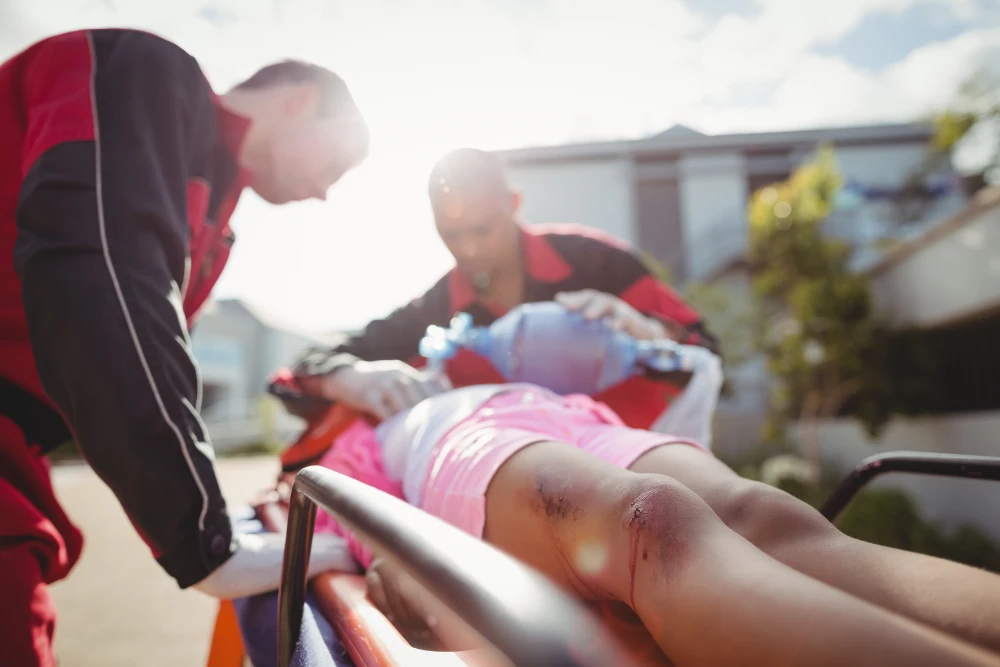Explosions can cause severe and varied injuries due to the force and effects they create. Injuries from explosions can be classified based on the mechanisms of occurrence and their impact on the body. Here are the main categories and mechanisms of explosion injuries:
1. Primary injuries
Primary injuries are caused by the direct impact of the blast wave from the explosion on the body.
- Barotrauma: Injuries caused by sudden changes in pressure, most commonly affecting hollow organs such as the lungs, eardrums, and intestines.
- Lung Damage: Rupture of alveoli and pneumothorax (collapsed lung) can occur due to a sudden increase in pressure.
- Ear Injuries: Perforation of the eardrums and hearing loss due to the blast wave.
2. Secondary injuries
Secondary injuries are caused by fragments and debris propelled by the explosion.
- Penetrating Wounds: Debris can pierce the skin and cause deep wounds, including damage to internal organs.
- Eye Injuries: Debris can cause severe eye injuries, including vision loss.
3. Tertiary injuries
Tertiary injuries are caused by the body being thrown by the blast.
- Contusions and Fractures: Being thrown can cause bruises, bone fractures, and dislocations.
- Head Injuries: Impact of the head against the ground or other objects can lead to traumatic brain injuries (TBI).
4. Quaternary injuries
Quaternary injuries include all other injuries not covered by the previous categories.
- Burns: Heat from the explosion can cause severe burns.
- Inhalation of Toxins: Inhaling smoke, chemicals, or dust can cause respiratory problems.
- Psychological Consequences: Explosions can cause post-traumatic stress disorder (PTSD) and other psychological issues.

First aid for explosion injuries
1. Assessing safety
- Ensure Scene Safety: First, ensure that the scene is safe before approaching the injured.
- Use Protective Equipment: If available, use personal protective equipment.
2. Check vital signs
- Consciousness and Breathing: Check the injured person’s consciousness and breathing. If the person is not breathing, start basic life support (CPR).
- Control Bleeding: Stop severe bleeding by applying pressure to wounds or using bandages and tourniquets.
3. Treating injuries
- Immobilize Fractures: Immobilize fractures using splints or improvised materials.
- Cover Wounds: Cover open wounds with sterile bandages or clean cloth to prevent infection.
- Treat Burns: Cool burns with clean, cold water and cover with sterile bandages.
4. Preventing shock
- Maintain Body Temperature: Cover the person with a blanket or warm clothing to prevent hypothermia.
- Elevate Legs: If there are no spinal injuries, elevate the injured person’s legs to improve circulation.
5. Seek emergency medical help
- Rapid Transport: Injuries from explosions require urgent medical intervention. Seek professional medical help as soon as possible.
- Provide Information to Medical Personnel: Be prepared to give emergency services as much information as possible about the injuries and the circumstances of the explosion.
Preventing injuries from explosions
- Education and Training: Regularly conduct safety and first aid training.
- Safety Measures: Implement safety measures and protocols in the workplace to reduce the risk of explosions.
- Use Protective Equipment: Ensure and use appropriate protective equipment in potentially dangerous areas.
Understanding these mechanisms and properly applying first aid can significantly reduce the risk of severe consequences from explosion injuries.



0 Comments